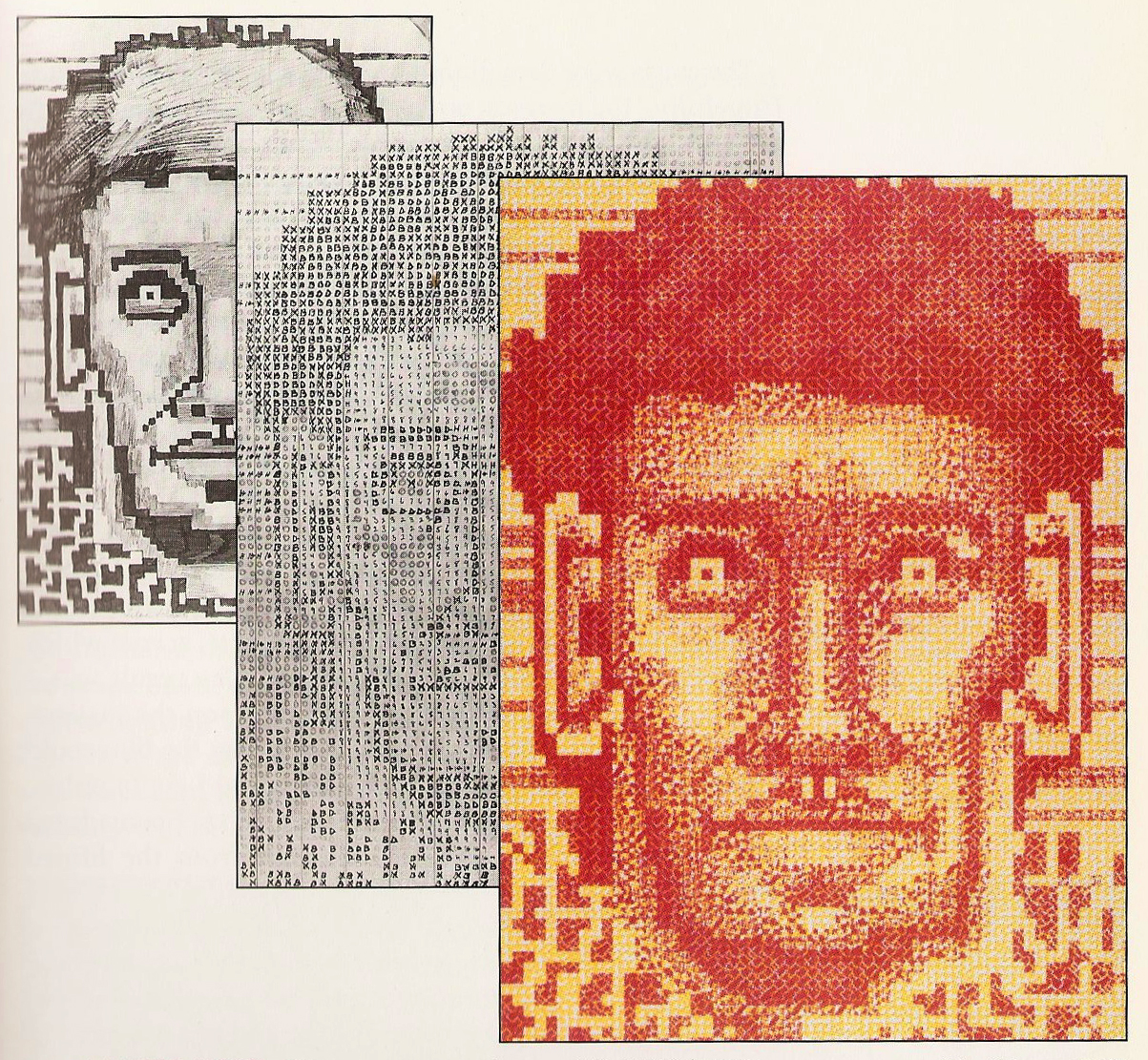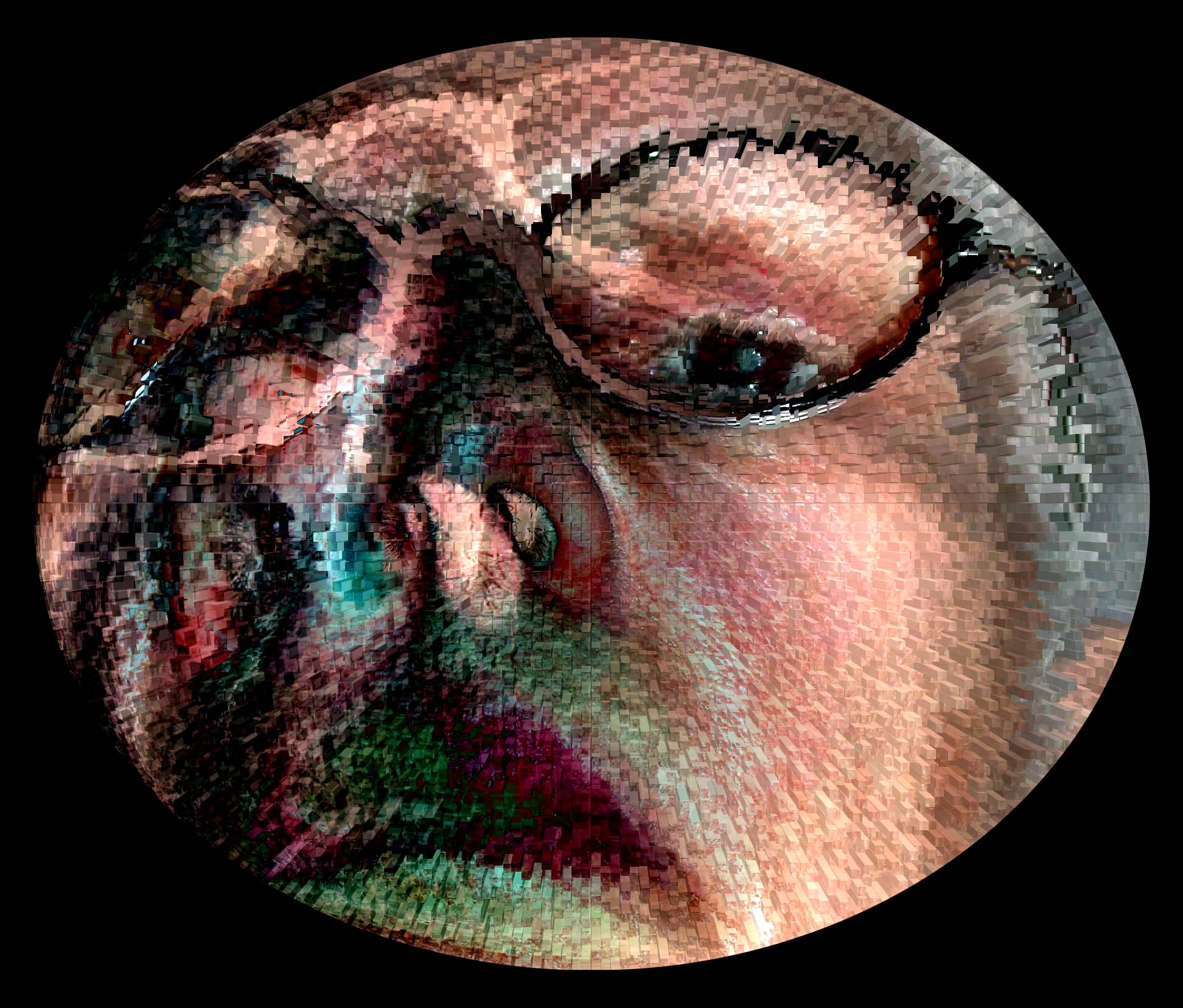kerjos-LookingOutwards06
Lillian Schwartz “Head” 1968
I chose this piece less because of its innovation in terms of representing the body or, more specifically, the face, but because of the process for making it that Lillian Schwartz describes on her website. Schwartz used graph paper to conceive of the representation of the face beforehand, which you can see in the above image, and for many of the face’s coordinates, she entered them, coordinate to coordinate, based on what she had written in paper.
I thought that this process was strikingly like my own: I have been drawing shapes with Bezier curves in Illustrator and then trying to bring them into Processing or p5 based on those sketches. It is somewhat reassuring to know that, although this process is tedious, it is practiced even by the best-known artists working with computation.
Given that, however, I still think that Schwartz’s face and my shapes could be rendered by a program that isn’t drawing them coordinate by coordinate or curve by curve.
Schwartz has another face project that I think is illuminating for comparison:
I am thinking about the discrepancy between these two modes of drawing, and I wonder if the distancing of the artist’s hand, so to speak, in the latter I think makes the work less interesting. It approaches a photo-realism that I think is indicative of the role of the machine in the making.

